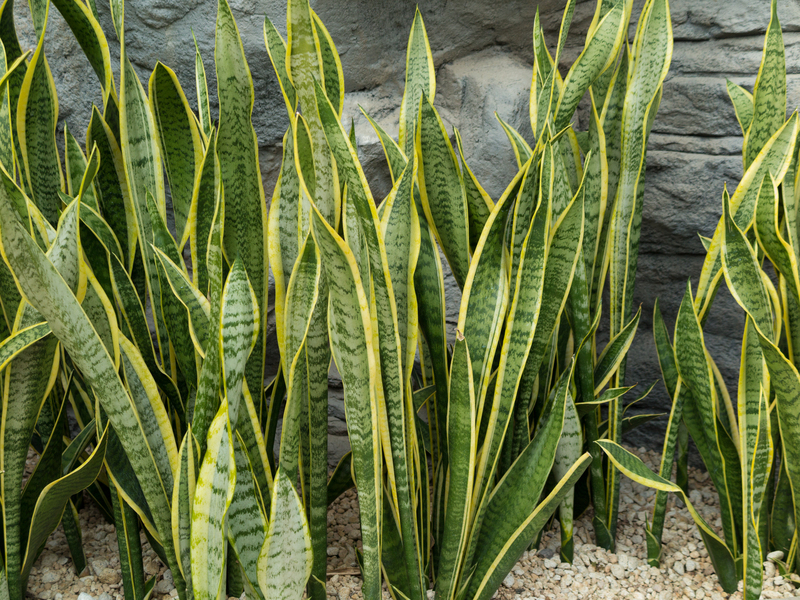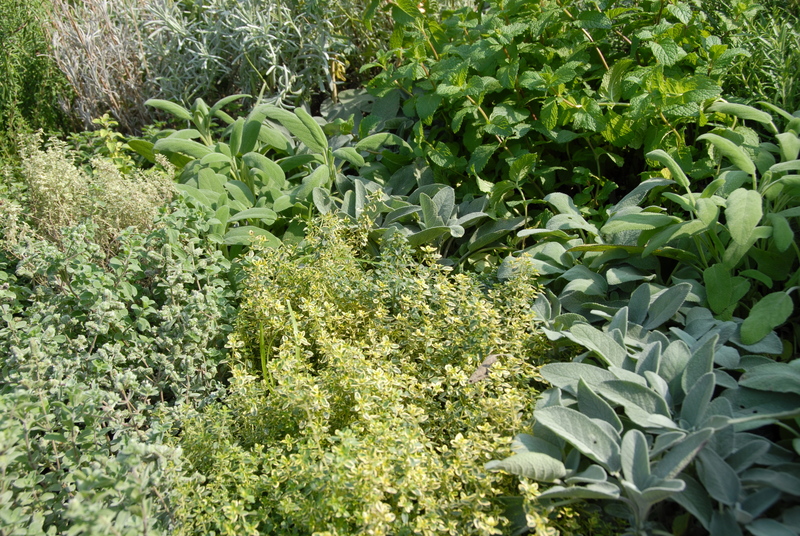From Fur to Flora: Mastering Gardening with Dogs by Your Side
Posted on 28/05/2025
From Fur to Flora: Mastering Gardening with Dogs by Your Side
Can you enjoy lush gardens while sharing your oasis with furry companions? Absolutely! Balancing dogs and beautiful landscapes is achievable with the right insights. Let's deep dive into the art of mastering gardening with dogs, exploring how you can foster both flourishing plants and happy pups.
Why Combine Gardening and Canine Companionship?
Cultivating a garden offers relaxation, fresh air, and unmatched aesthetics. For dog owners, the backyard is also a playground. Integrating your gardening hobby with your dog's wellbeing creates a holistic outdoor experience, ensuring the health of your plants and pets. Below, we guide you step-by-step in gardening with dogs, building an eco-friendly, safe, and gorgeous outdoor retreat for all.

Garden Planning: Setting Up for Dog-Friendly Success
1. Understand Your Dog's Behavior
- Barking and Digging: Some breeds are naturally inquisitive or energetic. Observe your dog's tendencies for digging, chewing, or sprinting, and plan garden zones accordingly.
- Marking Territory: Male dogs might mark boundaries. Create buffer zones or scent markers away from prized plants.
- Chasing Wildlife: If your dog loves the chase, consider safe, enclosed spaces and robust fences.
2. Garden Layout: Zoning for Paws and Plants
- Create Clear Paths: Dogs naturally patrol perimeters or enter/exit the house in particular ways. Installing gravel, mulch, or stepping stones can protect both grass and delicate flora.
- Designate Dog Zones: Set up digging pits, shady spots, and comfortable lounging areas for your pup to call their own. This curtails unwanted exploration in plant beds.
- Sturdy Fencing: Secure, dog-proof fencing (minimum 4-6 feet high) keeps dogs safe and prevents escapes into neighbors' yards or busy streets. Opt for materials that deter climbing or burrowing.
Choose Dog-Safe Plants and Avoid Toxic Flora
Not all garden greens are safe for your furry friends. Some popular ornamental plants can be highly poisonous to dogs, causing anything from mild gastrointestinal distress to life-threatening emergencies. Whether you're a green thumb or a novice, knowing which flora to plant is essential.
Common Toxic Plants to Remove or Avoid
- Oleander
- Foxglove
- Sago Palm
- Azalea
- Daffodil
- Lily of the Valley
- Autumn Crocus
- Cyclamen
- Rhododendron
For a comprehensive list of toxic plants, consult the ASPCA website. Always err on the side of caution when introducing new greenery.
Dog-Friendly Plants for Safe Play
- Sunflowers: Non-toxic and cheerful, great for visual impact.
- Marigolds: Not only safe but may deter some garden pests.
- Rosemary, Basil, and Sage: Edible herbs ideal for culinary and aromatic gardens.
- Camellia and Snapdragons: Colorful, non-harmful blooms.
Choose robust, hardy plants that tolerate some paw traffic and occasional rough play.
Training Tips: Helping Your Dog Respect the Garden
Gardening with dogs flourishes with patience and positive reinforcement. Here's how to foster good canine behavior in your outdoor space:
- Teach Boundaries: Use visual cues (such as low fencing or path markers) to indicate plant beds your dog shouldn't cross. Reinforce with treats and praise for respecting limits.
- Discourage Digging: Provide designated digging zones--fill a sandbox with toys, hide treats, and reward use of these areas.
- Reduce Temptation: Remove pet-attractive items from off-limits areas (like sticks or compost). Keep fertilizers and garden chemicals inaccessible.
- Utilize Commands: Training "leave it," "off," and "no" are invaluable for keeping dogs safe and gardens intact.
- Supervision: Spend time outside together, redirecting undesired behavior and encouraging exploration of approved zones.
Pet-Proofing: Garden Structures, Tools, and Maintenance
Dog-Safe Garden Materials and Features
- Mulch: Avoid cocoa mulch (toxic to dogs). Instead, use cedar, pine, or untreated wood chips.
- Edging: Use soft, rounded edging materials to prevent cuts or punctures.
- Pond Safety: Fencing around water features prevents accidental swims or ingestion of pond water.
- Toxin-Free Treatments: Choose organic compost and natural pest solutions, and avoid snail pellets or fertilizers toxic to pets.
- Storage: Secure tools, hoses, and chemicals when not in use--dogs love to chew!
Dealing With Wear and Tear
- Paths: Use dog-tolerant groundcovers and hardscaping for frequently trodden routes.
- Rethink Lawns: Some grass varieties (like Bermuda, Fescue, or Kentucky Bluegrass) recover better from dog play.
- Repair Quickly: Promptly reseed bare patches and address compacted soil to maintain healthy, green lawns.
Dog-Friendly Garden Activities: Creating Enrichment Outdoors
Gardening with dogs isn't just about avoidance--it's about engagement! Turn your garden into a stimulating environment for both you and your pup:
- Obstacle Course: Set up tunnels, low jumps, or weave poles for mental and physical exercise.
- Water Fun: Small splash pools or fountains can cool down dogs in hot months and add soothing ambiance.
- Sensory Planting: Incorporate aromatic plants (lavender, mint, or chamomile) for your dog's delight.
- Treat Trails: Hide healthy treats around the yard for natural scavenger hunts.
- Resting Nooks: Lay down soft bedding in a shady corner, making an inviting retreat for your pet to nap while you garden.
Seasonal Gardening with Dogs: Year-Round Tips
Spring and Summer
- Watch for Allergens: Dogs can suffer from pollen allergies. Rinse paws after outdoor play.
- Hydration: Always have a water bowl accessible, especially in the heat.
- Pest Patrol: Fleas, ticks, and mosquitoes thrive in warmer months; keep grass trimmed and use pet-safe repellents.
- Provide Shade: Set up umbrellas or plant fast-growing shrubs for natural cool spots.
Autumn and Winter
- Avoid Frostbite: Provide shelter and limit outdoor time in severe cold.
- Clean Up Debris: Remove piles of wet leaves, branches, or fallen fruit, which can harbor mold or toxic substances.
- Watch for Icy Tools: Store tools carefully to prevent dogs from chewing on or slipping over frozen items.
The Sustainable, Dog-Friendly Garden: Eco Tips
Responsible gardening isn't just about beauty and function--it's about sustainability and safety for all inhabitants, canine and human alike. Try these earth-friendly strategies to harmonize your outdoor space:
- Native Plants: They're hardier, require less maintenance, and are usually safer for pets.
- Compost Bins: Keep compost off-limits unless you're certain it's pet-safe. Avoid including meat, dairy, or anything moldy.
- Rainwater Harvesting: Utilize rain barrels, but secure lids to keep curious pets out.
- Integrated Pest Management: Use beneficial insects and nematodes over chemical pest killers.
- Reduce Lawn Chemicals: Limit herbicides and fertilizer, which can transfer to dog paws and lead to health issues.
Common Challenges and Quick Solutions
Every dog owner faces unique hurdles when blending canines and plants. Here's how to handle common dilemmas:
- Digging: Redirect to a digging box. Consider placing chicken wire under mulch in high-risk areas.
- Yellow Lawn Spots: Encourage dogs to urinate in gravel or mulch zones. Water spots promptly to dilute nitrogen content.
- Boredom Destruction: Enrich the yard with toys and rotate them for novelty.
- Chewing Plants: Use bitter apple spray for deterrence, and reward your dog for interest in chew toys instead.
Success Stories: Dog Owners Who Mastered Gardening
Across the globe, many have achieved harmony in their dog-friendly gardens:
- Lisa, Oregon: "Training my Labrador to follow stone paths was a game-changer. Now, my roses and pup thrive together!"
- Chad, UK: "Raised beds and fencing mean my greyhounds sprint safely. I grow veggies without worry!"
- Sophia, Australia: "Edible herbs, grass patches, and a kiddie pool keep my terrier entertained and away from my azaleas."

Frequently Asked Questions
- Can I use organic mulch in a garden with dogs?
Yes! Select untreated wood chips or cedar mulch to avoid toxic chemical exposure. Never use cocoa mulch. - What lawn types withstand dog play best?
Bermuda, Fescue, and Rye are durable, easy to repair, and recover quickly from rough use. - Are chemical fertilizers safe for dogs?
No. Opt for organic compost, and keep pets off treated areas until safe drying times pass. - Is composting pet waste safe?
It's best avoided in edible gardens due to risk of pathogens. Dispose of dog waste using biodegradable bags or specialized composters. - How do I train my dog not to dig in flower beds?
Positive reinforcement, providing a digging pit, and blocking beds with temporary fencing are your best strategies.
Conclusion: Growing Together--From Fur to Flora
Mastering gardening with dogs by your side is rewarding and fully possible. With a little planning, the right dog-friendly plants, dedicated play zones, and consistent training, your backyard can be the pride of your neighborhood--and your best friend's paradise, too.
Begin today: outline paths, plant pet-safe flora, and enjoy the sounds of wagging tails rustling through the dog-friendly garden you've lovingly created. Your dogs and your plants will thank you for it!

